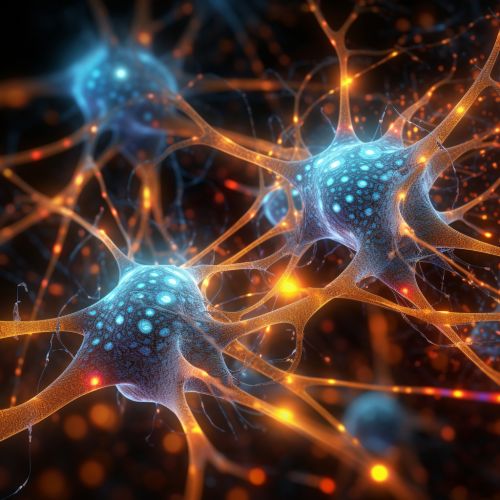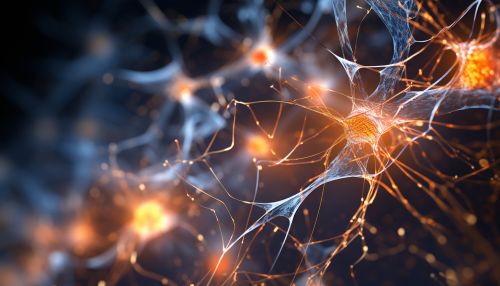Excitatory neurotransmitter
Overview
Excitatory neurotransmitters are a type of neurotransmitter that increase the likelihood of an action potential in the postsynaptic neuron. They play a crucial role in the transmission of signals in the nervous system. The most common excitatory neurotransmitter in the human central nervous system is glutamate, which is involved in cognitive functions such as learning and memory.


Function
Excitatory neurotransmitters function by binding to specific receptors on the postsynaptic neuron, causing an influx of positive ions into the neuron. This influx of positive ions makes the inside of the neuron more positive, or less negative, which is known as depolarization. If the depolarization reaches a certain threshold, it triggers an action potential, which is an electrical signal that travels down the neuron.
Types of Excitatory Neurotransmitters
There are several types of excitatory neurotransmitters, including glutamate, aspartate, and acetylcholine. Each of these neurotransmitters has a unique role in the nervous system.
Glutamate
Glutamate is the most abundant excitatory neurotransmitter in the human brain. It is involved in a variety of cognitive functions, including learning and memory. Glutamate is also involved in the regulation of synaptic plasticity, which is the ability of synapses to strengthen or weaken over time.
Aspartate
Aspartate is another excitatory neurotransmitter that is less common than glutamate. It is primarily found in the peripheral nervous system and is involved in the transmission of sensory information.
Acetylcholine
Acetylcholine is both an excitatory and inhibitory neurotransmitter, depending on the type of receptor it binds to. In the peripheral nervous system, acetylcholine is excitatory and is involved in muscle contraction. In the central nervous system, it is involved in a variety of functions, including arousal, attention, learning, and memory.
Role in Disease
Excitatory neurotransmitters play a role in several neurological and psychiatric disorders. For example, excessive glutamate activity can lead to excitotoxicity, which is a process that damages or kills neurons and is involved in conditions such as stroke, Alzheimer's disease, and amyotrophic lateral sclerosis (ALS).
